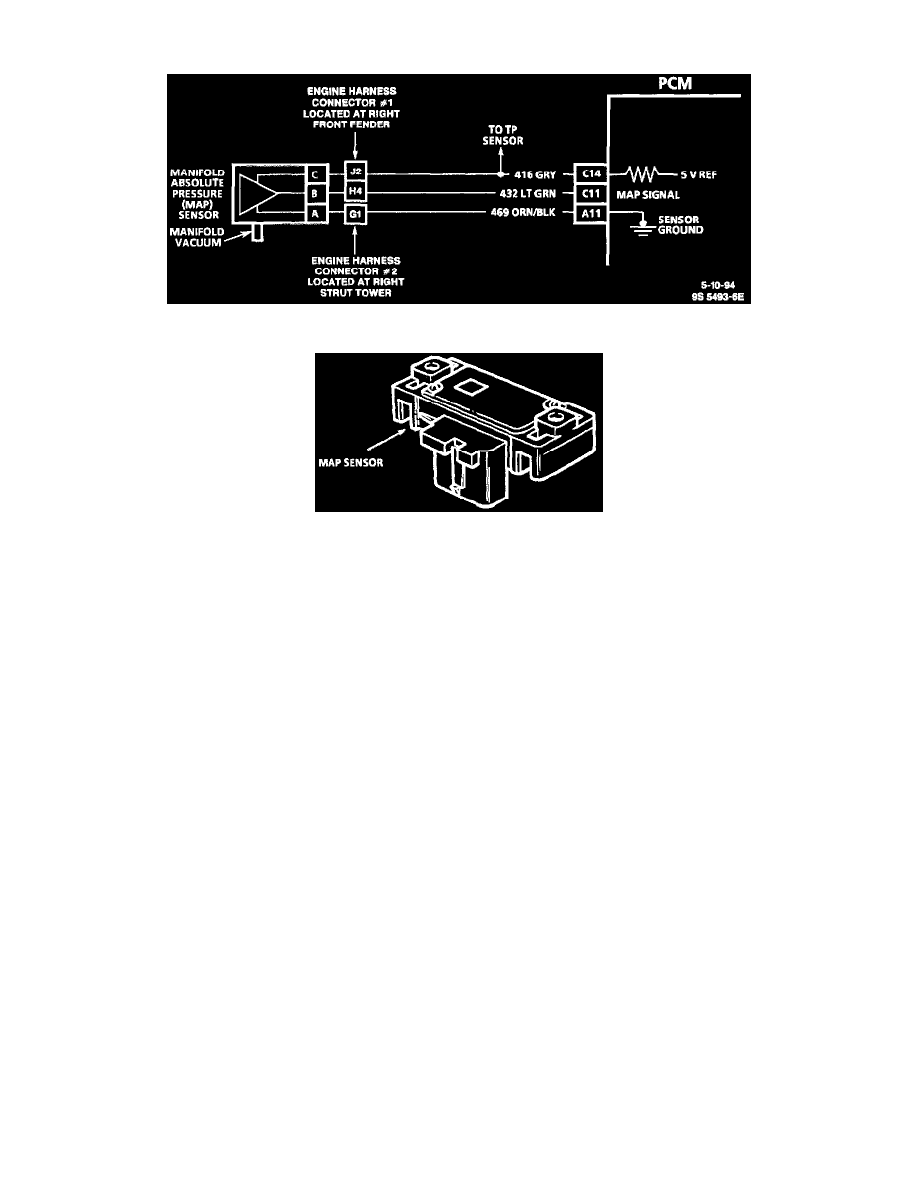Silhouette V6-191 3.1L VIN D TBI (1995)

Manifold Absolute Pressure (MAP) Sensor: Description and Operation
Manifold Absolute Pressure Schematic
Manifold Absolute Pressure (MAP) Sensor
The Manifold Absolute Pressure (MAP) sensor measures the changes in the intake manifold pressure which result from engine load and speed
changes and converts this to a voltage output.
A closed throttle on engine coastdown would produce a relatively low MAP output, while a wide-open throttle would produce a high output. This
high output is produced because the pressure inside the manifold is the same as outside the manifold, so 100% of outside air pressure is measured.
MAP is the OPPOSITE of what you would measure on a vacuum gauge. When manifold pressure is high, vacuum is low. The MAP sensor is also
used to measure barometric pressure under certain conditions, which allows the Powertrain Control Module (PCM) to automatically adjust for
different altitudes.
The PCM sends a 5 volts reference signal to the MAP sensor. As the manifold pressure changes, the electrical resistance of the sensor also
changes. By monitoring the sensor output voltage, the PCM calculates the manifold pressure. A higher pressure, low vacuum (high voltage)
requires more fuel, while a lower pressure, higher vacuum (low voltage) requires less fuel.
The PCM uses the MAP sensor to control fuel delivery and ignition timing. A failure in the MAP sensor circuit should set a DTC 33 or DTC 34.
